10 Giant Menorahs That Will Light Up for Hanukkah in NYC
From Brooklyn to the Bronx, we’ve rounded up the most exciting giant menorahs that will light up throughout the next eight evenings!


“Are you an architect?” asked the Suffolk County Parks representative inside the architecturally famous Big Duck in Flanders, Long Island, “I can always tell.” The Big Duck is one of those iconic must visits for architects and architectural historians – on par with a visit to Le Corbusier‘s Villa Savoye outside Paris. The Big Duck gave rise to an architectural term – a “duck” – or a building whose shape represents the business or service available inside, thanks to its inclusion in the famous book Learning from Las Vegas by Robert Venturi and Denise Scott Brown about roadside architecture.
The Big Duck was built in 1931 by Martin Maurer and his wife Jeule, duck farmers in Riverhead. They were inspired by another “duck” – a coffee pot-shaped coffee shop they saw in California. The Maurer’s duck was built by carpenter George Reeve and stage set designers William and Samuel Collins, with help from Smith and Yeager builders who attached the wire mesh to the wooden frame of the duck using cement. A live duck, attached to the porch of the Maurer’s home, was used as a model and Reeve used the skeleton of a cooked chicken to study how the interior architecture should be constructed.
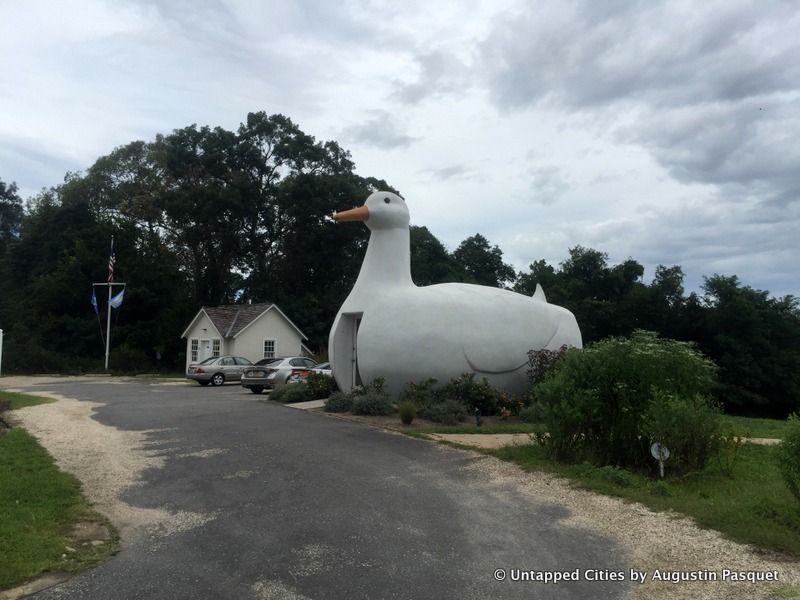
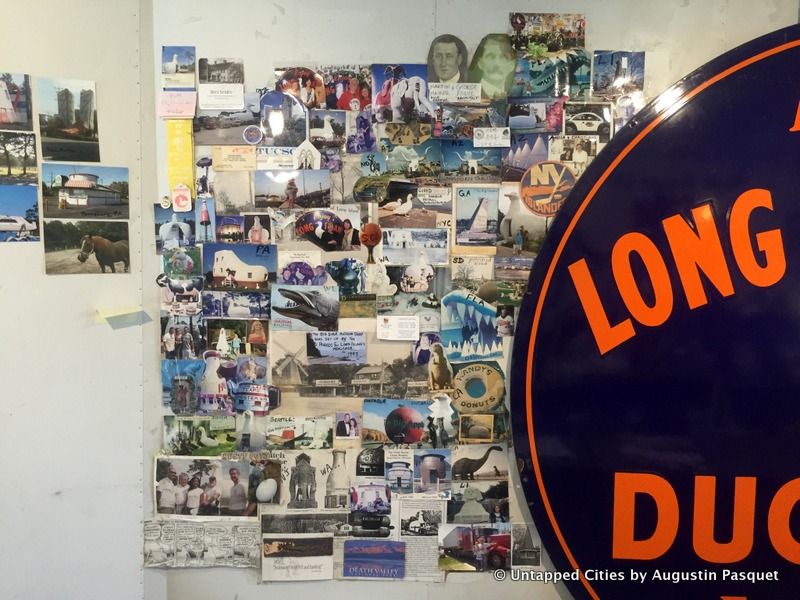
A wall of fame of other “duck” architecture
To give you a sense of size, the Big Duck measures 30 feet long, 20 feet high and 14 feet wide. You enter through a main door and can exit through a back door (under a wooden beam that warns, “Duck duck duck!”). Back in the day, the eyes were lit red using Model T tail lights.
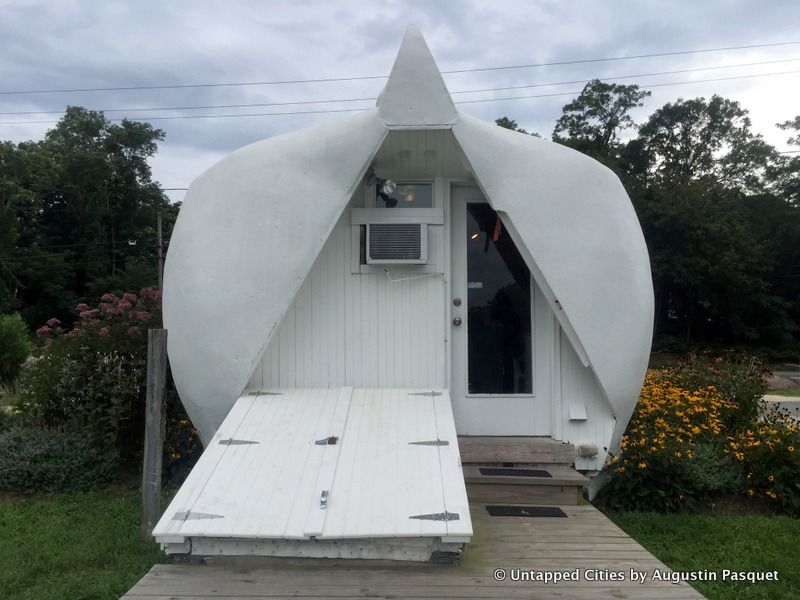
The Big Duck was moved to Flanders in 1936. The land on which the duck sits was used as a Peking duck farm until 1987, when it was donated by the last owners, Kia and Pouran Eshgi, to Suffolk County. Two of the farmhouses were renovated and still stand.
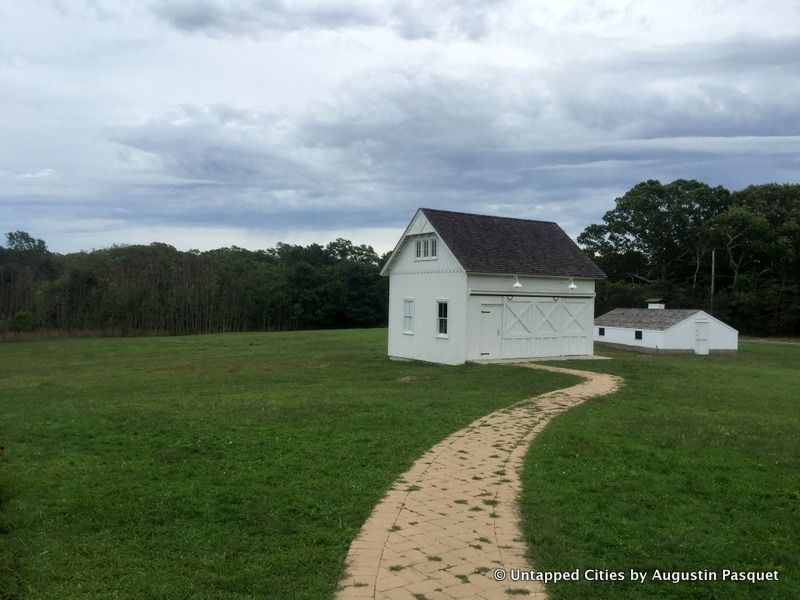
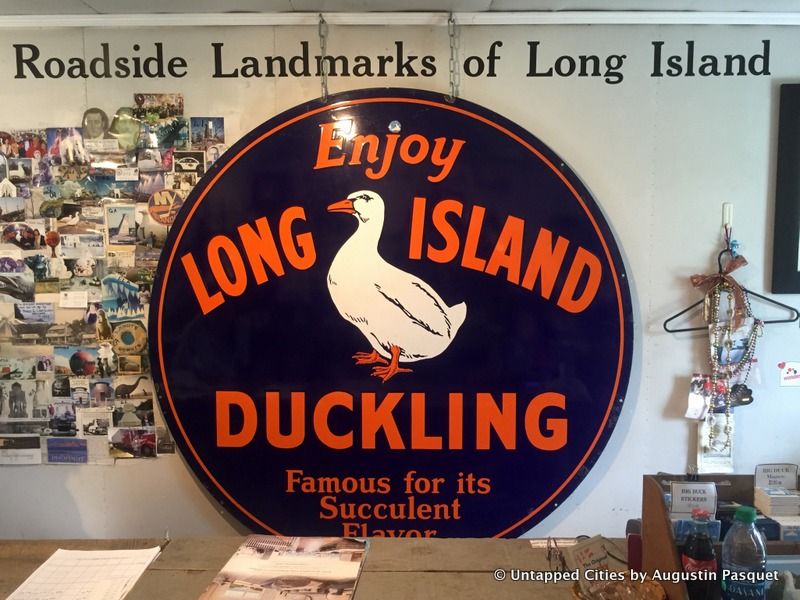
The Big Duck is listed on the National Register of Historic Places and now serves as a gift shop. The staff affectionately refers to the duck-inspired wares sold inside as “duck-a-bilia.” Local Long Island products are also sold.
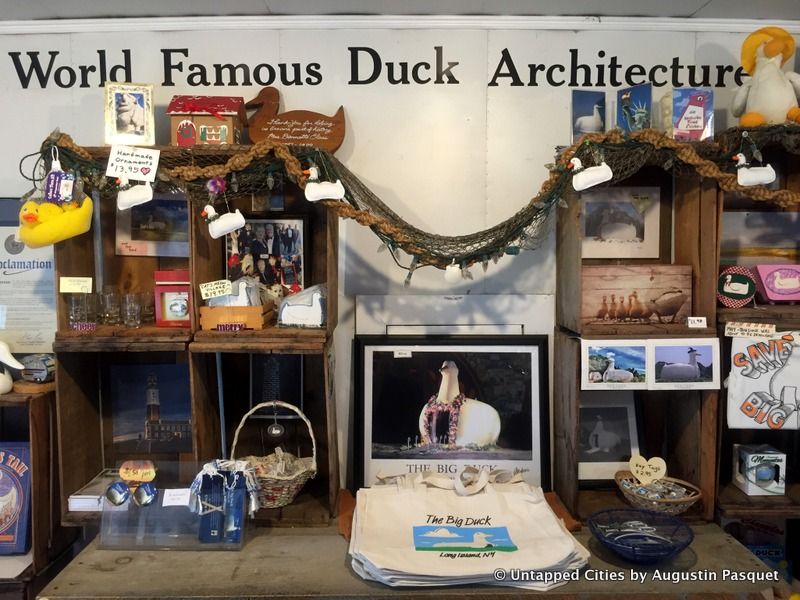
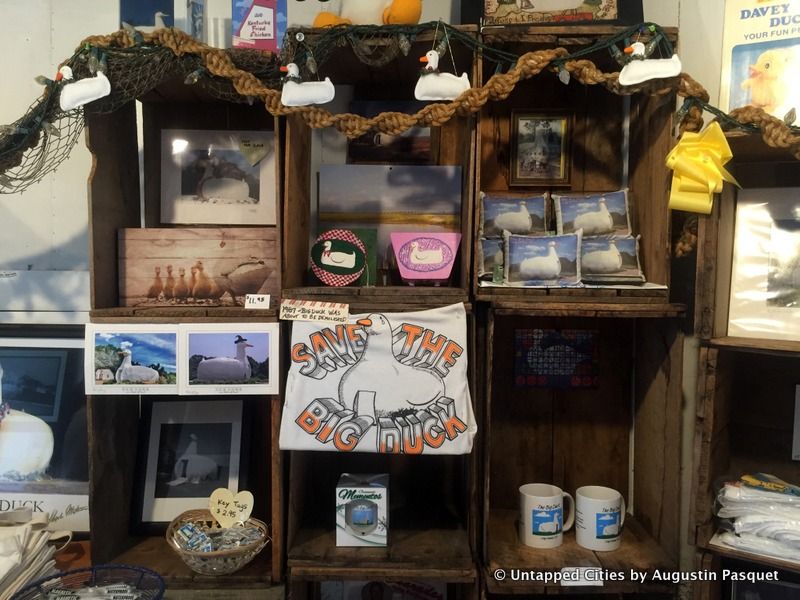
There were once over 200 duck farms on Long Island, but now there is only one left and it recently received a grant from the state for needed upgrades. As the legend goes, Peking ducks supposedly arrived to Long Island in 1870, brought back from China by a sailor. In 1969, 60% of the nation’s duck production hailed from Long Island’s duck ranches. That figure is down to 15% and shrinking, due to a combination of rising land values, farming costs, and increased environmental regulations. A large portion of the farmland on the east end of Long Island has been converted into vineyards and wineries, a more lucrative business.
Still, the Big Duck continues to tell the story of this one thriving business and thanks to preservation efforts, continues to stand tall along the roadside on Route 24. An upcoming event to check out: the annual holiday lighting of the duck, which will take place next on the first Wednesday after Thanksgiving, usually coinciding with the lighting of the Rockefeller Center Christmas tree.
Next, frolic on a real-life lavender farm in Marion, Long Island.
Subscribe to our newsletter